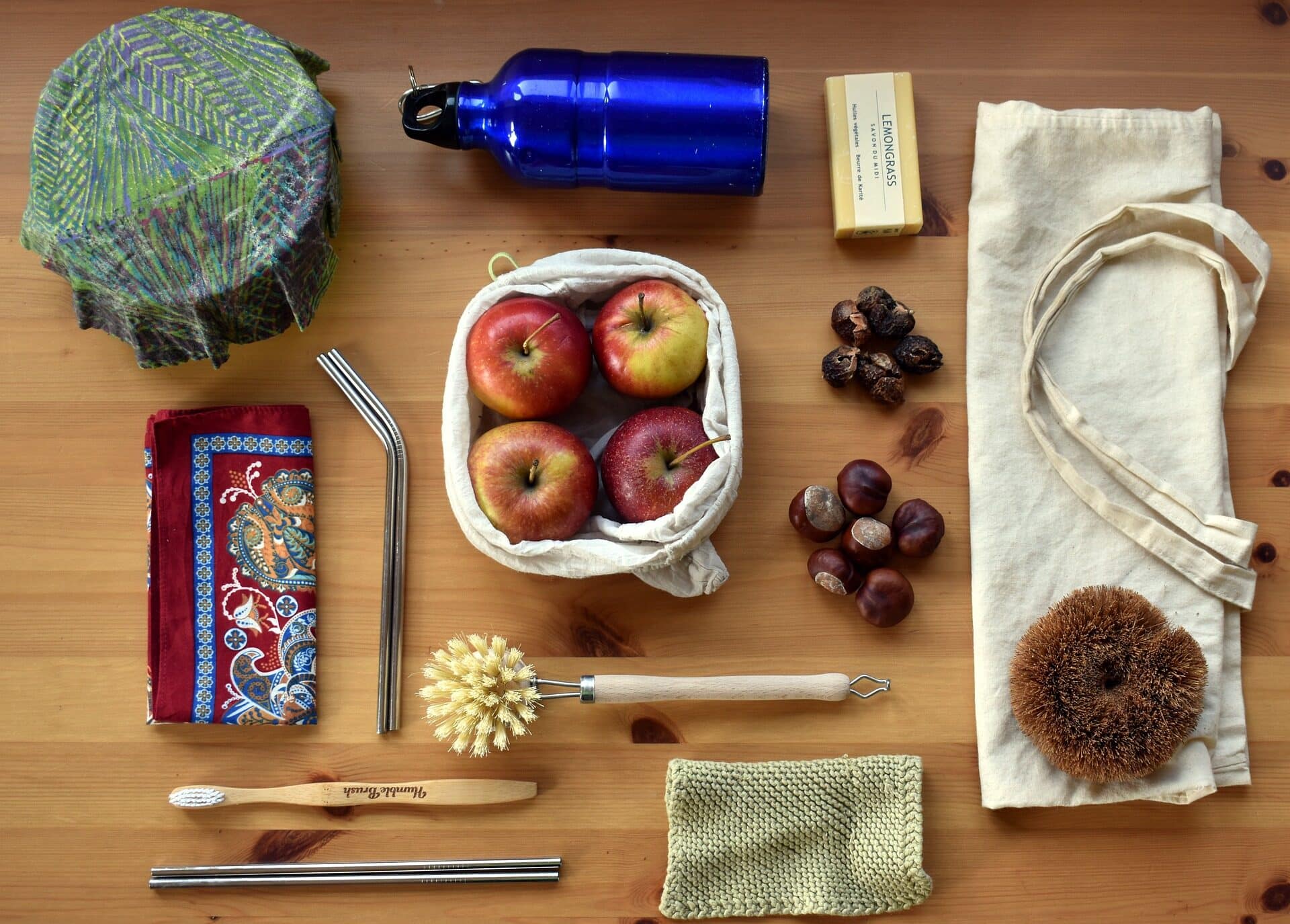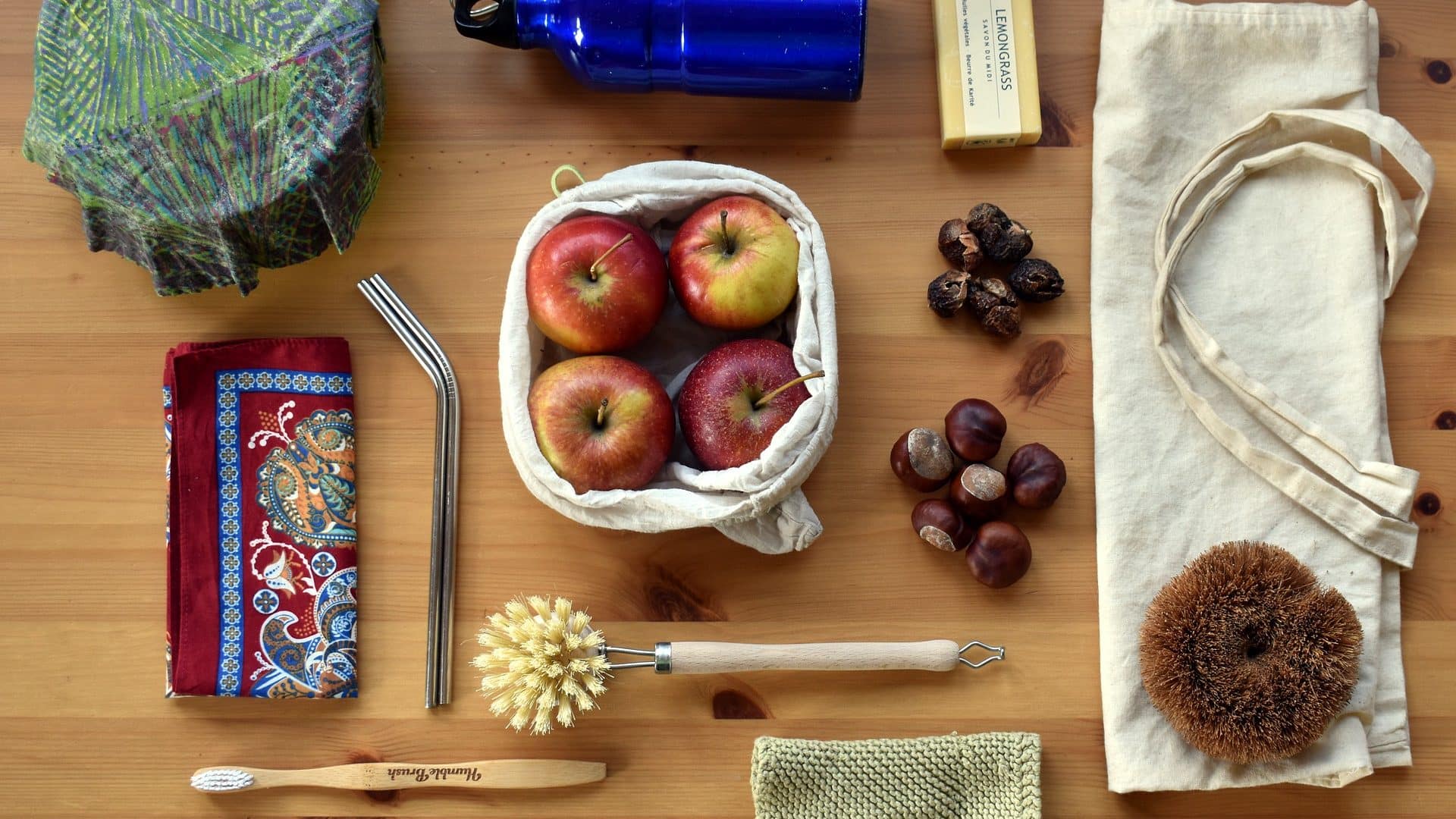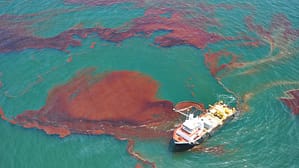Have you seen that crazy image of one year’s worth of garbage in a single mason jar? Yes—a person’s entire year of waste in a tiny jar. But how is this even possible? Is it even possible? (Spoiler Alert: it is!) Let’s meet a family that went on a mission for one month to see if it was.
More and more people are freaking out about how much garbage they leave in their wake, and for good reason. Buy a lightbulb: wrapped in five times the volume of plastic. Order online: you get a box filled with popcorn or bubble packaging. Get takeout: you’re handed a bag of styrofoam, extra condiments, and utensils you don’t need. Your morning coffee to-go: what do you do with the cup? Let’s not even get started on the food that goes to waste.
Needless to say, it’s hard these days to avoid being trashy.
So in this world of trash, what can any of us do to help? Do we need to live like those people who can fit all of their garbage in a mason jar? Do we have to live like minimalists? What about our coffee to go, do we have to give up that? The answer is, no.
We’re going to give you a look at how reducing your garbage doesn’t have to be super difficult! And as a bonus, you’ll have to take out the trash way less.

The average American creates 4.51lbs of garbage every day. That’s about 1,600lbs of trash a year! 1
That’s quite a lot. But all that garbage doesn’t have to become garbage.
Of the garbage Americans make, almost 40% could be composted and around 40% has the potential to be recycled. 2 So, even if we don’t get to zero waste, reducing what we send to a landfill can be really helpful!
What does “Zero Waste” even mean though?
Well, the Zero Waste International Alliance defines zero waste as, “The conservation of all resources by means of responsible production, consumption, reuse, and recovery of products, packaging, and materials without burning and with no discharges to land, water, or air that threaten the environment or human health.” 3
That can feel like a big definition, but if you break it down, the heart of zero waste is reducing what we buy and the stuff we throw away that contributes to waste streams like landfills and incineration.
So, how does somebody even get started? Reducing waste can be a big and confusing task, and going zero waste, well, that can really feel impossible. Luckily, you’re not alone when it comes to feeling this overwhelm.
Let’s try and strip away some of that intimidation factor and really look at what going zero waste means when you have a family and a kid, and maybe don’t live in a big city where there are stores of all kinds within biking distance.
One of our favorite YouTube creators, Craig Benzine of WheezyWaiter, and his wife, Chyna decided to try going zero waste for a month to see how the lifestyle suits them and see what practices fit into their lives after 30 days. Here’s what zero waste actually looks like for many people.
I love Craig and WheezyWaiter. For the past year, he’s been taking on challenges like this zero waste challenge, meditating every day, doing yoga, and walking 10,000 steps every day and documenting how he feels. His videos are always insightful, well-researched, and feel very real, making them seem more approachable for the average person.
Go check out his YouTube channel to see more from him!
Refuse, Reduce, Reuse, Rot, Recycle.
So, maybe going zero waste isn’t possible for everybody, but the movement has certainly helped so many begin thinking about their waste in positive ways! Maybe you’re one of those people now, too.
It’s important with any movement to start with attainable goals; to break down where you can be helpful. Start small and you are making a difference! Do what you can do to implement zero waste ideas that you can actually use as much as possible. Maybe you can’t find your favorite fruit or veggie at the store without plastic packaging, but you can try asking the store to carry it! Or contact the brand you buy from to politely ask for alternatives to plastic packaging. You’d be surprised how just a nice ask can change things.
Getting Practical:
Now, it’s tough to get practical on this kind of thing. We all have aspirations of reducing our waste, and then, life gets in the way. But for the past year, I’ve been trying more diligently to reduce my own plastic waste in particular, and here are some things I’ve discovered:
I by no means get all of my garbage into a mason jar.
I still have a garbage bin. But now, I only have to take out the garbage every 3 months! But if you want some inspiration on getting your garbage into a mason jar, do check out this article, its a great place to start setting some goals!
Start with one corner of your life!
When I looked around my life to see what I can reduce, there were a lot of places to start. But the easiest place for me seemed to be in my bathroom. I had drawers of toiletries in little plastic packages, shampoo in plastic packages, body wash in plastic packages, conditioner in plastic packages, deodorant in plastic packages. There were… a lot of plastic packages.
So, I started doing my narrowing down to what I really needed. It turns out, I only needed 2 hair products, one of which I could easily find in a metal container. As all of my body washes and face washes, shampoos and conditioners, and deodorant ran low, I swapped them out for bars of soap or conditioner that came in a metal bottle that I can return to the company so it can be reused! I went down the line and found what was easiest for me to replace, and I haven’t looked back at all.
The best resources I found to make these swaps were my local stores and The Package Free Shop. (I’ve linked the products I’ve switched to and loved above.)
Make it easy for yourself.
If you take on too much all at once you’re more likely to quit, so start small. Bring a water bottle with you! Make that one thing a habit and then a to-go mug for your coffee becomes easier to throw in your car. Once you get your reusable grocery bags down, then you can remember to grab your little bags to put your fruits and veggies in! Start with something so small it seems silly not to do it, and then add on from there.
COMPOST!
I cannot stress this enough. (If you want some astonishing food waste facts go check out this piece!)
Just try composting as much as you can and you’ll start to notice you take out the trash way less. At 22%, food is the largest component of the waste stream that makes it to landfills. 5
And it produces a ton of methane! In the U.S., 34% of all methane emissions come from landfills, which is bad news. 6
Luckily, there are lots of ways to start composting. I compost right at home in our backyard, but there are local pick-up services you can use as well! A simple Google of “composting near me” can get you on the right track to finding a way to compost that is easiest for you!
Make the little switches.
I’ve used this one the most when it comes to food and drinks. If I absolutely must grab something to drink on the go, I try to buy it in a can or in a glass container to reduce my plastic consumption. I also try and search out the produce at the supermarket that isn’t wrapped in plastic (and now I bag it in the aforementioned little bags). Oh, and as it turns out, you don’t need to use as many paper towels as you think. 8 months ago I stopped using paper towels in my kitchen (I replaced them with washable rags) and I haven’t finished a single roll!
I was inspired to start making these little changes when I started writing and researching another article for the Goodness Exchange. That article has a ton of great tips on reducing your waste, and why this movement isn’t about being perfect!
Our Plastic Waste Problem: It’s Not About Perfection
We all know that plastic waste is a huge problem, but what are we supposed to do about it? Turns out there’s a lot we can do with just a few little changes!
Read Article Watch Video Listen to PodcastIf you have any tips you’ve found helpful in your own waste reduction, let us know! Give us a shoutout on Instagram, Twitter, or Facebook! We want to know what you’ve tried.
Stay beautiful & keep laughing!
-Liesl

Don’t miss out on a single article!
Enjoy unlimited access to over 500 articles & podcast that give you a positive perspective on the state of the world and show you practical ways you can help.
Notes:
- US EPA,OLEM. “National Overview: Facts and Figures on Materials, Wastes and Recycling | US EPA.” US EPA, 2 Oct. 2017, www.epa.gov/facts-and-figures-about-materials-waste-and-recycling/national-overview-facts-and-figures-materials. Accessed 11 Feb. 2020. ↩
- US EPA,OLEM. “National Overview: Facts and Figures on Materials, Wastes and Recycling | US EPA.” US EPA, 2 Oct. 2017, www.epa.gov/facts-and-figures-about-materials-waste-and-recycling/national-overview-facts-and-figures-materials. Accessed 11 Feb. 2020. ↩
- “Zero Waste Definition – Zero Waste International Alliance.” Zero Waste International Alliance, 2018, zwia.org/zero-waste-definition/. Accessed 11 Feb. 2020. ↩
- WheezyWaiter. “We Tried Going Zero Waste for a Month, Here’s What Happened.” YouTube, 2020, www.youtube.com/watch?v=xY8N17qjbw0. Accessed 11 Feb. 2020. ↩
- US EPA,OLEM. “National Overview: Facts and Figures on Materials, Wastes and Recycling | US EPA.” US EPA, 2 Oct. 2017, www.epa.gov/facts-and-figures-about-materials-waste-and-recycling/national-overview-facts-and-figures-materials. Accessed 11 Feb. 2020. ↩
- “Waste Land: Does the Large Amount of Food Discarded in the U.S. Take a Toll on the Environment?” Scientific American, 3 Mar. 2010, www.scientificamerican.com/article/earth-talk-waste-land/. Accessed 11 Feb. 2020. ↩








